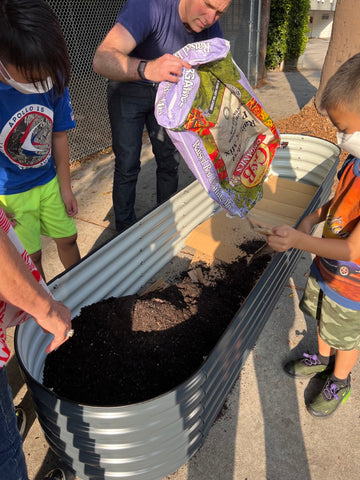How to Build a Cheap, Easy Emergency Vegetable Garden
Creating an emergency vegetable garden bed can be a wise choice when facing unexpected situations or needs. This method allows you to grow your own food in limited space to address emergencies or shortages. Here are detailed steps and considerations on how to build an emergency vegetable garden bed:
1.Choose a Planting Space:
Find an outdoor area that receives at least 4-6 hours of sunlight per day. This will be the location for your emergency vegetable garden. It could be a balcony, terrace, small yard, or even a rooftop. Make sure the area can accommodate planting containers or raised beds.
2.Select Planting Containers or Beds:
Choose suitable planting containers based on your space. Large containers like whiskey barrels, 5-gallon buckets, small trash bins, or smart fabric pots can all be used for growing food. Alternatively, raised beds are a good option, which can be square-shaped at 4'x4' or 4'x8', or even larger.
3.Prepare Planting Materials:
Gather materials needed for planting soil, typically a mix of compost, vermiculite or perlite, and garden soil. You can purchase these materials or use organic potting soil as a substitute. In emergency situations, topsoil and compost are also viable choices.

4.Prepare the Planting Area:
Clear the planting area of grass by using waterproof fabric or black plastic covering to expose it to sunlight and kill the grass. Alternatively, you can remove the grass using a shovel or spade.
5.Build Planting Containers or Beds:
Construct or place the chosen containers or beds according to their type. If using raised beds, you can use cinder blocks to form the outer edges, creating a sturdy frame.
6.Fill Containers or Beds:
Fill the containers or beds with the prepared materials. Compost provides nutrients, vermiculite or perlite aids in drainage, and garden soil offers support.
7.Choose Suitable Plants:
Select vegetables and herbs that suit your climate, space, and family preferences. Lettuce, radishes, spinach, carrots, beans, tomatoes, and herbs are good choices.
8.Sow or Plant Seeds:
Follow the instructions on the seed packets to sow or plant the chosen plants. Pay attention to the appropriate depth and spacing.
9.Maintain and Manage:
Water the garden at least once a week, cover the soil to minimize weed growth, harvest mature plants promptly, and ensure adequate sunlight.

10.Increase Yield:
Implement methods such as vertical gardening, proper crop rotation, and continuous harvesting to stimulate plant growth and increase yield.
11.Save Seeds and Sustain:
In emergencies, use open-pollinated seeds so you can save seeds for continued self-sufficiency in planting food.
12.Monitor Carefully:
Regularly monitor plant growth, addressing any disease or pest issues.
By following these steps, you can establish an emergency vegetable garden bed to provide you with a fresh food supply. This approach not only meets your family's needs but also offers a sense of food security during emergencies. Keep in mind that the success of your emergency garden depends on ongoing maintenance and care, making it an engaging and rewarding process.
